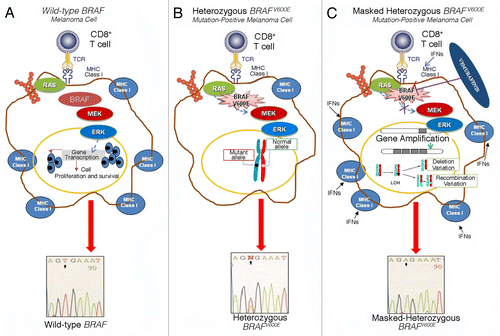Figures & data
Figure 1. Vemurafenib increases interferon γ-induced MHC expression on melanoma cells harboring a masked heterozygous BRAFV600 mutation. (A) MHC expression levels are higher in wild-type melanoma cells that in cells bearing a BRAFV600 mutation. (B) Mutant BRAFV600 suppresses the expression of MHC molecules on the cell surface. (C) The administration of BRAF inhibitors (BRAFis) promotes the interferon γ (IFNγ)-induced expression of MHC molecules by melanoma cells that harbor a “masked” heterozygous BRAFV600 mutation in the context of BRAF amplification or loss-of-heterozygosity (LOH). ERK, extracellular signal-regulated kinase; MEK, MAPK/ERK kinase; TCR, T-cell receptor.
